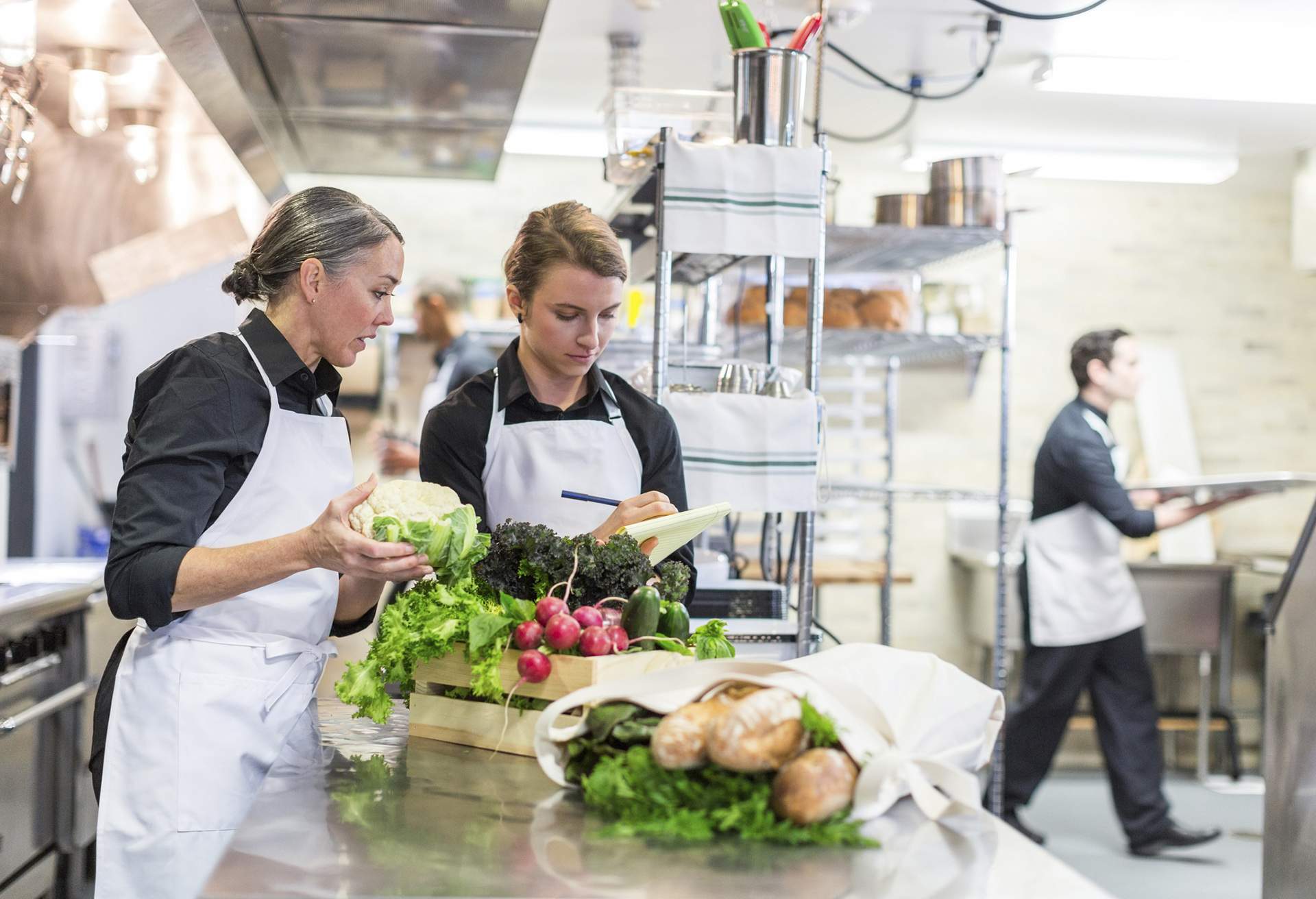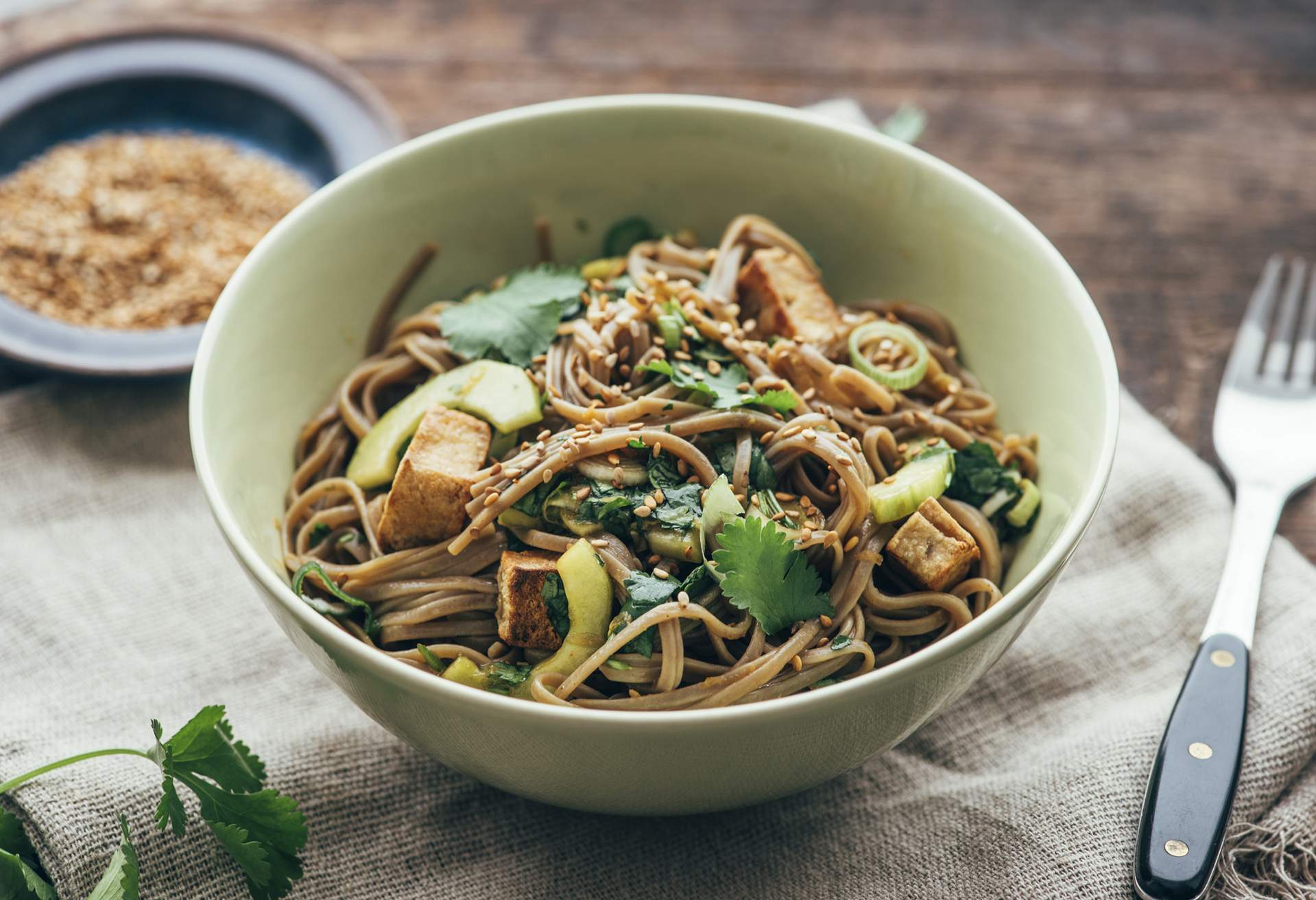According to a 2021 OpenTable diner survey*, 87 percent of diners said it was important or somewhat important that restaurants implement environmentally friendly practices. It’s not usually clear, though, which restaurants do this.
The good news is you can still make choices that align with your values at almost any restaurant—all it takes is a little understanding of how foods can impact the planet and a willingness to ask questions. Here’s how to order the most eco-friendly items from any restaurant menu.
Look for a credentialed restaurant

One easy way to make eco-friendly choices is to pick a restaurant with a third-party seal of approval for eco-friendliness. Zero Foodprint, for example, vets all its partner restaurants. You could also look for a Green Restaurant Certified restaurant, or one bearing the Green Seal.
“Food and farming are the biggest climate opportunity,” says Anthony Myint, executive director of Zero Foodprint, which partners with restaurants to raise money for regenerative agriculture, or a set of farming practices that build healthy soil and help pull carbon out of the atmosphere. All these programs are growing, but for now many people don’t have access to even one of these credentialed spots.
Ask the server
In many restaurants, it’s hard to tell at a glance the carbon footprint of a food. If you ask for the most sustainable item on the menu, you might learn that the eggs on the menu come from pastured chickens at a nearby farm, an eco-friendly choice. More importantly, you let the restaurant know that you care about these things, which lets them know the demand is there.
Order a plant-based item
Of course, when you ask these kinds of questions, it’s just as likely you’ll get a blank stare. In the absence of information about where the products come from, you can always order the vegetarian option. The Green Restaurant Association awards big points for vegan and vegetarian menu items because factory-farmed meat, which accounts for 99 percent of the meat produced in the United States, degrades the environment.
Choose beans or lentils
Before you pick an item made from one of the trendy new alt-meats, see if there’s anything made from beans or lentils instead. Those alt-meats are likely better for the environment than factory-farmed meat, but the truth is they are too new to make that claim with any degree of certainty. When it comes to the original plant-based protein—beans and lentils—the facts are clear: Legumes require less water than other protein sources, and they enrich the soil they’re grown in. A black bean burger is a better choice than an alt-meat burger, and either is better than a beef burger.
Go for the grains

Grains such as rye and buckwheat are cover crops, which help slow soil erosion and improve soil health. They’re also full of nutty flavor and make a great alternative to risotto. When you see these grain-forward dishes on restaurant menus, don’t sleep on them. Remember that soba noodles are made from buckwheat, and many pasta chefs these days turn to interesting grains like rye to put their own spin on the classics.
Pick local vegetables
The notion of “farm to table” has become so cliche that many restaurants don’t even mention the provenance of their produce anymore for fear of getting the Portlandia treatment. But the fact remains that ingredients grown close to home, especially on organic farms, are better for the planet because they reduce an item’s “food miles.” That means there’s less greenhouse gasses emitted to truck them around, and small local farms tend to be some of the best stewards of the soil and land.
Enjoy mussels, clams, and oysters
These delicious bivalves are powerhouses that can actually help clean up the water they’re grown in. They don’t require feeding, there’s no chemicals involved in raising them, and they help pull carbon out of the atmosphere. As marine ecologist Antony Knights told the BBC, “Each mussel can filter 1.75 liters of seawater per hour, and given that they colonize at a density of around 500 mussels per meter squared, it becomes clear how they can have a positive impact pretty quickly.”
Splurge on regeneratively raised meat

As a rule, cutting back on beef is a good way to reduce your carbon footprint, but like every good rule, there are exceptions. Most people know that factory-farmed beef is an environmental problem; fewer understand that another kind of beef can be part of a solution. Research shows that cows can be raised on grasslands in a regenerative way that sequesters carbon, pulling it out of the atmosphere and enriching the soil.
North American grasslands actually need to be grazed by ruminant animals—it used to be the bisons’ job—to maintain soil health and the biodiversity of the habitat. If you find this type of meat on the menu at a restaurant, order it with a clear conscience. It will almost certainly be labeled—the National Audubon Society issues a seal for beef raised this way, though there are other ranches using regenerative grazing practices without any official imprimatur.
“Regenerative beef is way more climate beneficial than the soil-degrading [non-organic] tofu or alternative meat,” says Myint. “It turns out that how an ingredient was grown is much more important than what it is.”
There are nuances to making eco-friendly choices when ordering at a restaurant, but there are also more options than some people think. You don’t have to go vegan or conduct a full supply chain investigation to make a positive impact with your choices. With these basics in mind, it’s possible to find an earth-friendly entrée almost anywhere you go.
*OpenTable surveyed over 21,000 diners in the U.S. and Canada on the OpenTable network between February 7, 2021 and February 15, 2021.




